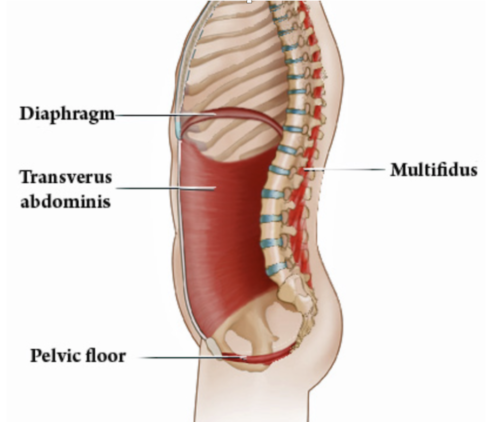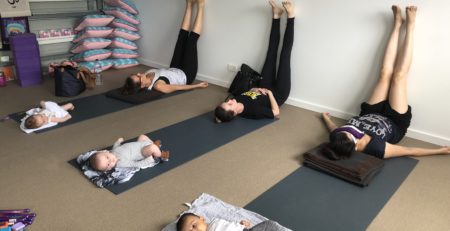The importance of our pelvic floor muscle. How do we work our pelvic floor muscles ?
Our Pelvic Floor muscles are located at the very base of our body as indicated in the diagram below. Our pelvic floor muscles represent the base of our core stabilising muscles and these muscles are responsible for holding up our internal organs including our bladder & bowel.
Exercising your pelvic floor muscles is very important to help keep these muscles strong, just like any other muscle in your body. Our saying ” if you don’t use it, you lose it ” relates to all muscles in our body including your pelvic floor muscles. Toned pelvic floor muscles help prevent sore lower backs, provide bladder continence, bowel continence, help in stabilising & balancing the other core muscles in our body, provide organ support, sexual sensation & a sense of healthy overall wellbeing.
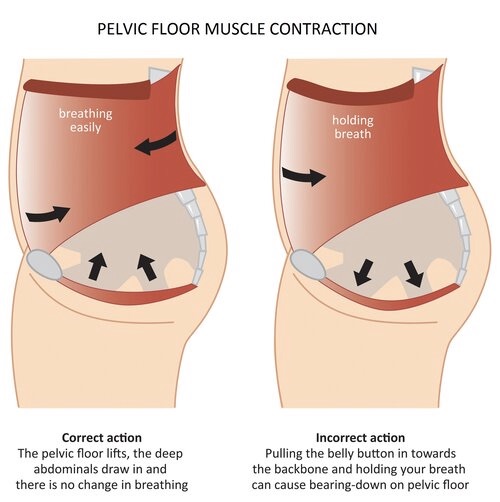
VISUALISING OUR PELVIC FLOOR MUSCLES USING THE DIAGRAM ABOVE : Your pelvic floor muscles are represented on the bottom red line. Imagine a muscular sling from your pubic bone at the front of your pelvis, travelling along the base of your body until it reaches your tail bone at the base of your spine. The sides of your pelvic floor attach to your sitting bones. Hence why toned pelvic floor muscles are responsible for holding up your internal organs including your bladder & bowel (& uterus in woman) so prolapse and incontinence does not occur.
Here’s a helpful way to start to activate your pelvic floor muscles : Lets work our pelvic floor muscles !
- Imagine you are going to pass wind, so tighten up around your back passage to stop that from happening. Lift your anus upwards & inwards towards your heart. This image helps 80 percent of people both male and female.
- Now activate the muscles you would use to squeeze shut and stop your urine mid-stream. Activate these muscles to squeeze & lift up towards your heart.
PELVIC FLOOR EXERCISES : Quick Exercises :
- Squeeze & hold for one second
- Relax completely for one second.
- Repeat this 5 times
- Then relax for 10 seconds.
- Repeat this cycle 5 times. A complete set of the “quick exercises ” should take you about 2 minutes.
PELVIC FLOOR EXERCISES : Long Exercises :
- Squeeze your pelvic floor muscle shut as tightly as you can & hold them shut for as long as you can – up to a maximum of 10 seconds.
- Don’t hold for more than 10 seconds. Longer is not better.
- Relax completely for 10 seconds. Make sure you take 10 seconds to relax.
- Repeat this cycle up to 15 times.
Don’t be discouraged if these exercises are difficult at first. Start slowly doing whatever you can and just keep practicing. With practice these muscles will become stronger and toned.
Keep relaxed at all times :
- Throughout your pelvic floor exercises ( Also known as Kegal exercises ) it is important to relax your buttock, shoulders, jaw, feet & toes completely.
- Continue to breath as normal. It is important to breath easily and freely.
- Pelvic floor or Kegal exercises are completely invisible to others. When we activate our pelvic floor muscles correctly no one knows we are doing them.
Incorporating Pelvic Floor exercises into your Yoga Practice :
Pelvic floor exercises are to be done when the body is not moving, therefore we can add our pelvic floor exercises into our yoga class as we hold certain yoga poses.
You may like to add your pelvic floor exercises to the following yoga poses :
Cat, Lunge, Squat, Mountain Pose, Triangle Pose, Seated forward bend. We can also do our pelvic floor exercises when we sit still or lye down for relaxation. We do provide time during our yoga classes to incorporate pelvic floor exercises which is an excellent reminder for all students to keep practicing our pelvic floor exercises.
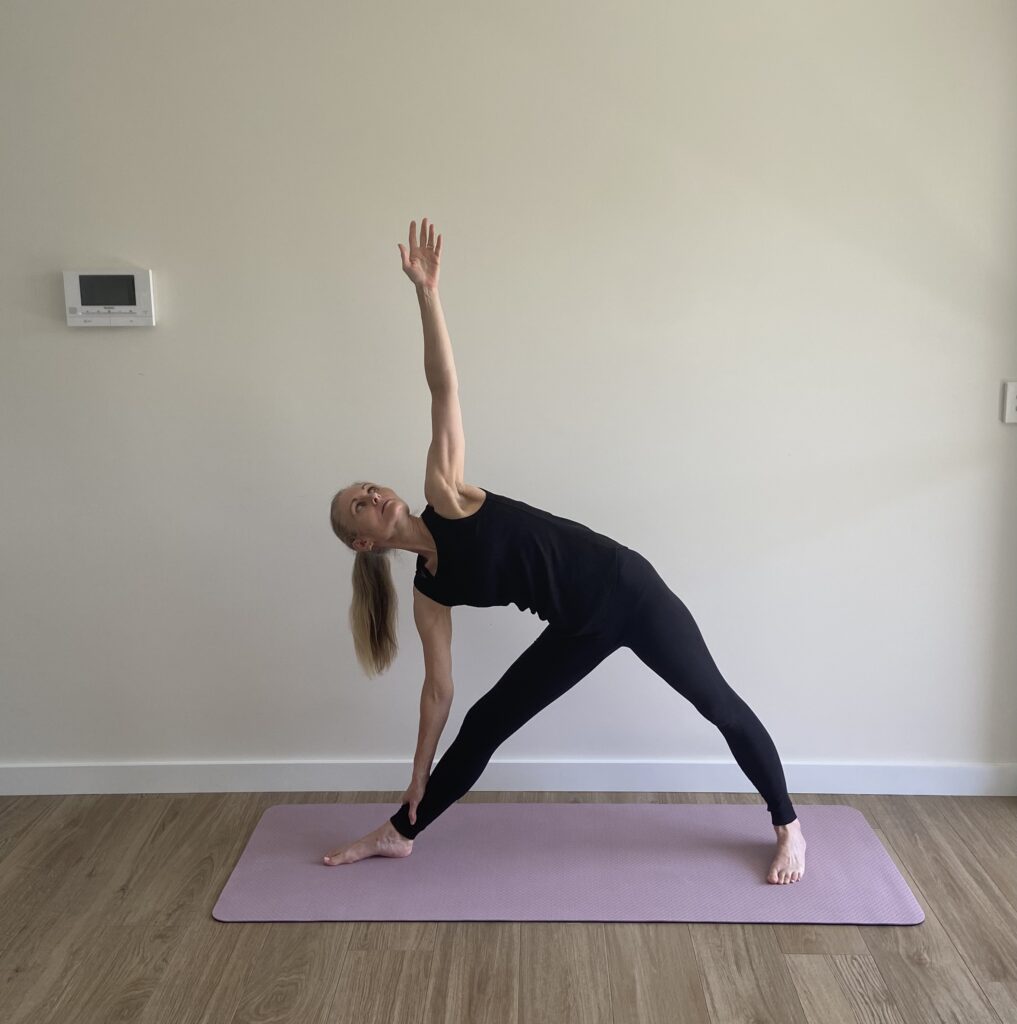
Triangle Pose – Trikonasana
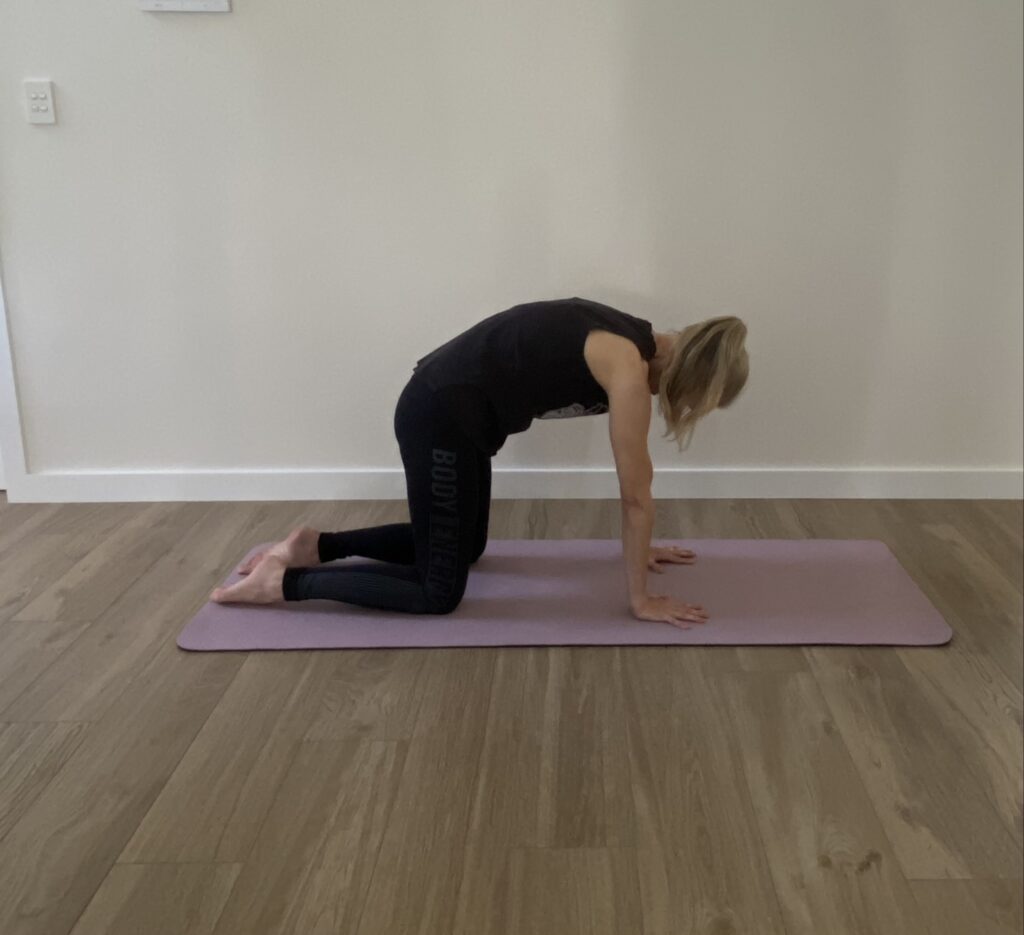
Cat Pose
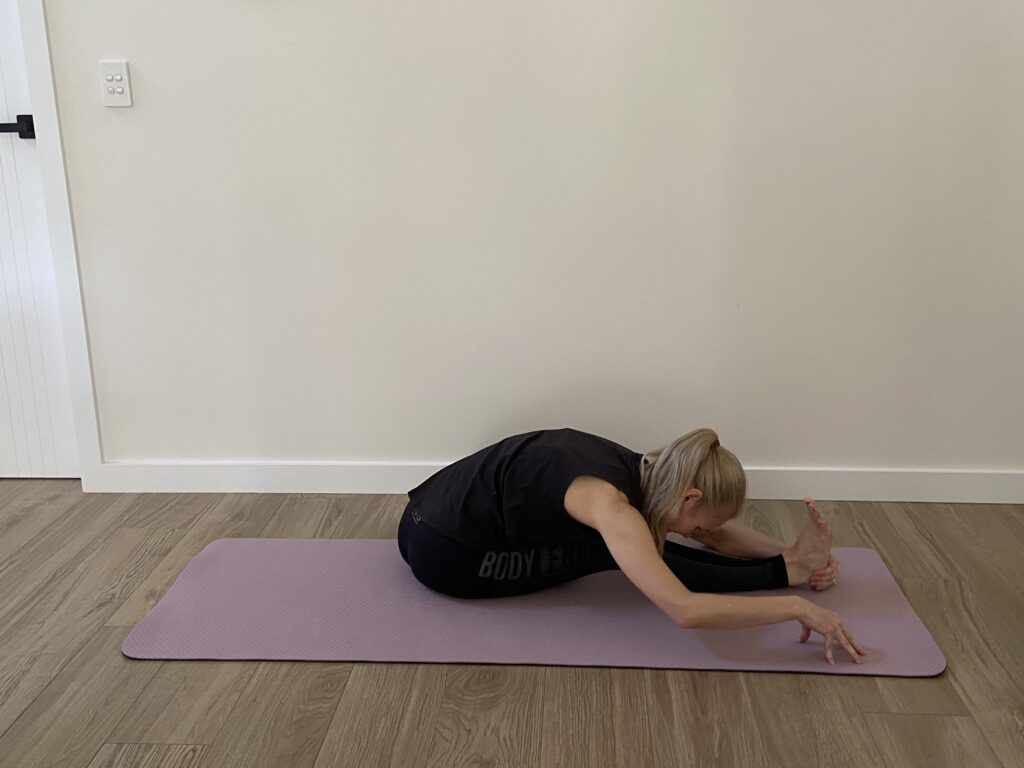
Seated forward bend – Janusirasana

